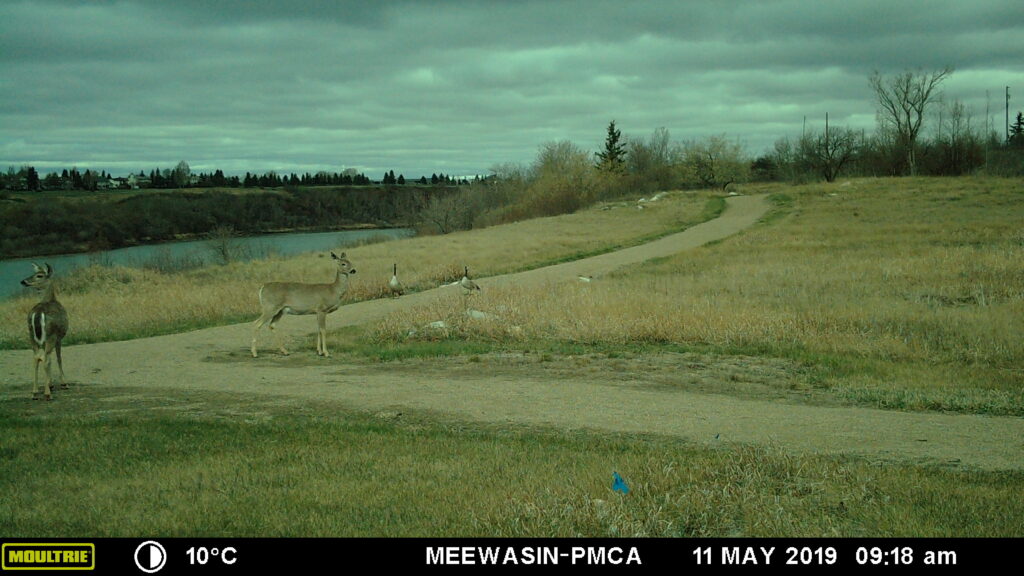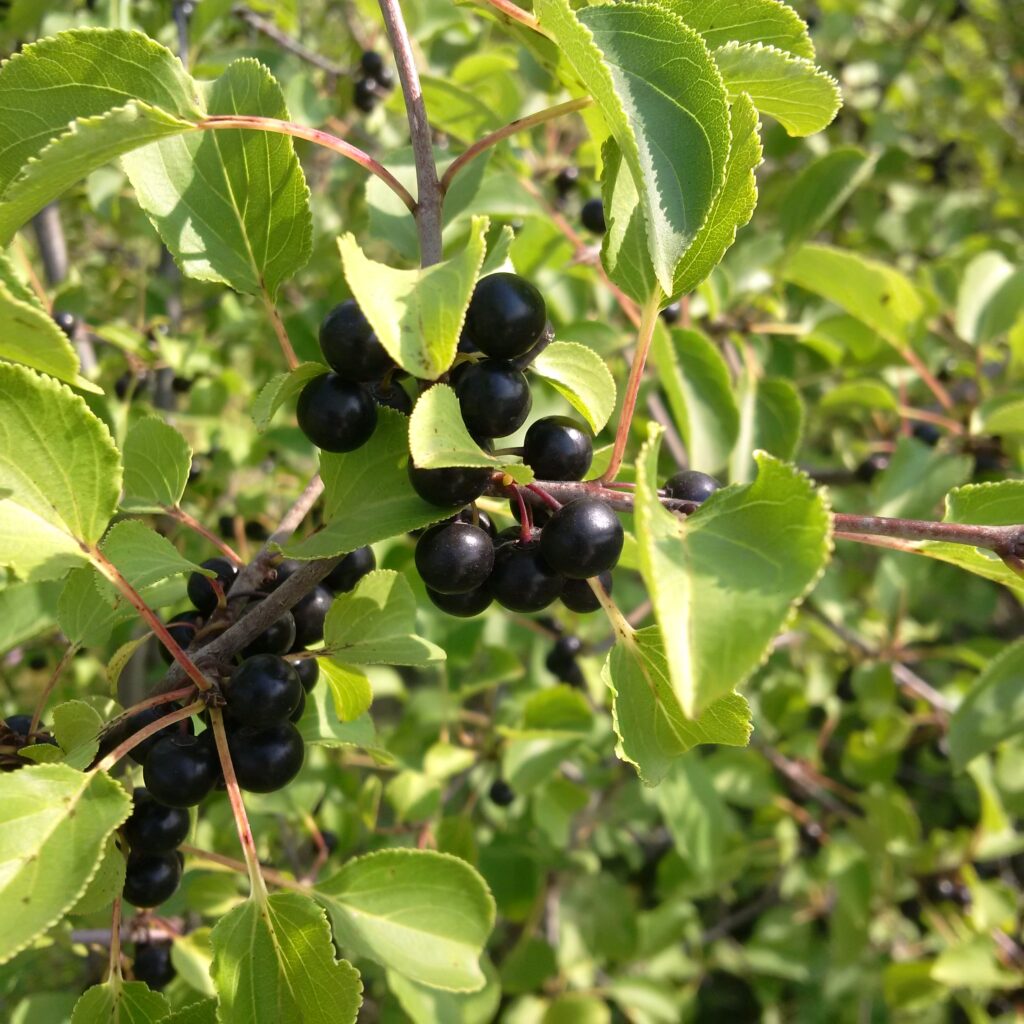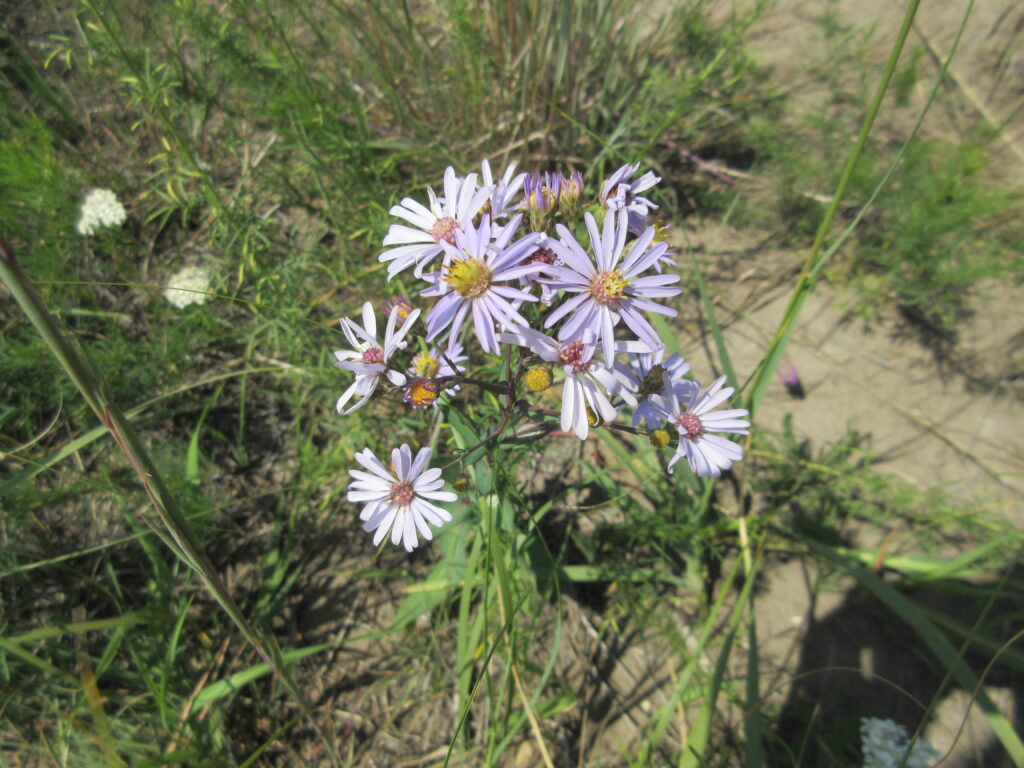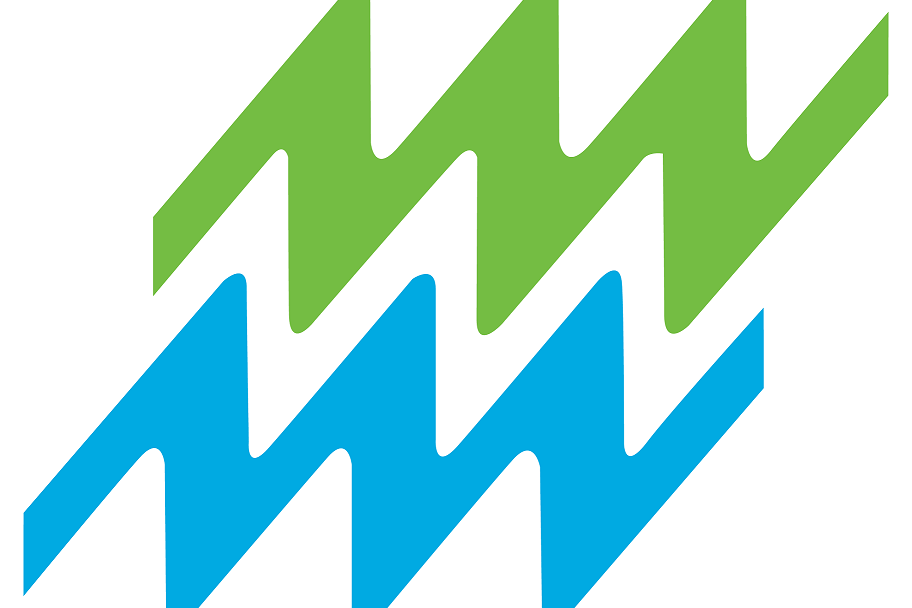Owen Tillie, Resource Management Technician at Meewasin, inspects an absinthe (Artemisia absinthium) forb in Kiwanis Memorial Park. Absinthe is an introduced species in the Meewasin Valley, and is listed as a noxious weed under Saskatchewan’s Weed Control Act, W-11.1.
Most people have heard of invasive species, but many struggle to define them – and who could blame them? Given the long history of species introductions, constant advances in science, dissenting and often contradictory opinions, the complexity of the Eukarya family tree, and the Latin-dominated system of taxonomy – the list goes on – it can be incredibly frustrating to try and understand as a layperson.
So; what exactly is an invasive species?
An invasive species is one that is introduced to a new environment and subsequently overpopulates in a way that harms that environment. This differs from an introduced species, which is simply a species that has been moved to an environment outside its native range. When introduced species become established and spread beyond their initial location, they are considered naturalized. However, when they overpopulate and cause environmental damage, they are invasive. The distinction between naturalized and invasive species is not always clear—even experts sometimes disagree on whether certain species are invasive—but these are the general principles.
Additionally, noxious weeds are plants classified as harmful to agriculture, ecosystems, or humans and livestock. These weeds often spread aggressively and cause damage due to the absence of natural controls. While many noxious weeds are introduced, some are native.
In short, all invasive species are introduced, but not all introduced species are invasive.
Consider the following examples:
White-tailed Deer (Odocoileus virginianus), also known simply as whitetails, are a species of medium-sized deer native to parts of North America, Central America, and South America. Many years ago, whitetails could not be found in the Meewasin Valley, nor anywhere else in Saskatchewan; it was too far west, their North American range being further east. As settlers moved westward, so too did the whitetails, following in the wake of the environmental changes colonial society brought about. Whitetails can certainly damage environments if their population goes unchecked, but a healthy population of predators, supplemented by human hunting activity, can effectively prevent this. As a result, few would deem whitetails invasive; White-tailed Deer are considered a naturalized species throughout Canada, including in the Meewasin Valley.

White-tailed Deer (Odocoileus virginianus), a naturalized species in the Meewasin Valley. This image was captured by one of Meewasin’s trail cams at Peggy McKercher Conservation Area.
European Buckthorn (Rhamnus cathartica), also known as Common Buckthorn, is a species of small tree native to Europe, northwest Africa, and western Asia. It was brought to North America in the early 1800s as an ornamental, and today it can be found in Canada from Saskatchewan to Nova Scotia. You can learn more about European Buckthorn in a previous blog we published; ultimately it takes over the understory, leaving little room for native species, which didn’t evolve to compete with it. European Buckthorn is considered an invasive species in Canada, and it is listed as a noxious weed under Saskatchewan’s Weed Control Act, W-11.1. It can be found throughout the Meewasin Valley.

European Buckthorn (Rhamnus cathartica), an invasive species in the Meewasin Valley.
But why is the success of invasive species like European Buckthorn considered damaging the environment? What about survival of the fittest, à la Charles Darwin?
It’s true, species have always competed with one another for resources, and even invade new environments on their own. But the range and scale at which humans have introduced species is much greater than what would naturally occur, and as a result, invasive species are outcompeting multitudes of native species, which has serious negative implications.
Imagine an understory full of native plants like asters and goldenrods. These plants provide sustenance to native insects, as well as a place for them to mate and spend the winter. Now imagine that same understory after an invasion of European Buckthorn. The asters, goldenrods, and other native plants are gone – they were outcompeted and choked out – which means the native insects are gone, searching for sustenance elsewhere. So there are less pollinators to spread pollen amongst local plants, and there is less prey for the insect-eating animals; these constraints on local food sources put pressure on native wildlife populations, who must now compete for fewer resources – and up the food chain it goes.

Smooth Aster (Symphyotrichum laeve), a native species in the Meewasin Valley.
Invasive species are a problem all over the world, but the situation is especially urgent in native grasslands, which are already one of the most endangered ecosystems on Earth. So, what can be done to prevent the spread of invasive species, and to restore the ecosystems they’ve affected?
The best way to fix a damaged ecosystem is to prevent it from being damaged in the first place. There are a number of ways you can prevent the spread of invasive species, ranging from simple tasks like using the boot brushes stationed at trailheads like Crocus Prairie, or donating to your local environmental nonprofit organization, to more involved efforts like planting native plants in your garden instead of non-native plants, and educating and encouraging your family and friends to do the same. If you’re willing to get your hands dirty, Meewasin hosts volunteering events to remove various invasive species such as Baby’s Breath (Gypsophila paniculata), Nodding Thistle (Carduus nutans), and yes, European Buckthorn.
Meewasin employs a number of tactics to control invasive species, including prescribed fire, targeted grazing, the aforementioned volunteering events, and by collecting and releasing beetles. Please note that these efforts are organized and undertaken by professionals, and should not be tried at home.
When an ecosystem has been damaged, whether it be by invasive species or other means, it can often be restored to its previous healthy and vibrant state through ecological restoration and reclamation. Meewasin engages in many activities that fall into these broad categories – ecological monitoring, planting native plants, and wrapping trees, to name a few examples – but that’s a topic for a future blog.
To learn more about invasive species in Saskatchewan, click here.
If you see an invasive species, report it:




